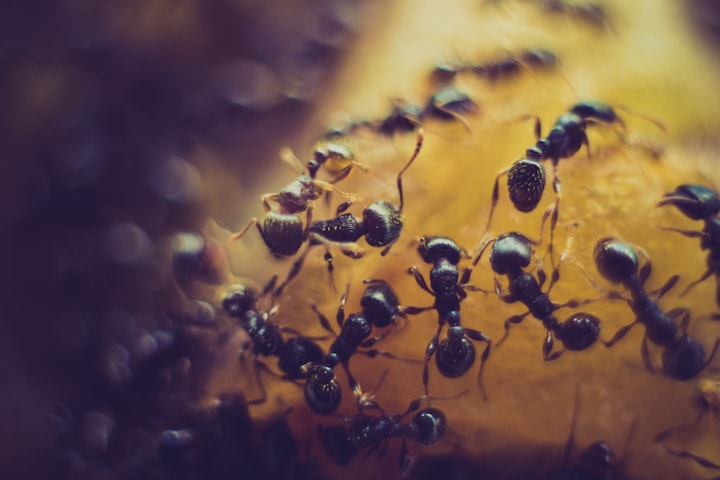The Astonishing Civilization of Ants
An Unimaginable World of Agriculture, Social Order, and Zombie Apocalypse

Imagine a civilization that outnumbers humanity by one and a half million times, not consisting of mere bacteria, but of intelligent beings with a fully functional social order, clear hierarchy, and career ladders. These creatures have transitioned successfully from hunting and gathering to agriculture and animal husbandry. They teach the youth, care for the elderly and disabled, and bury their dead. Astonishingly, they can even reproduce through cloning and have outlived every species that has roamed their planet for the past 100 million years. This might sound like the plot of a post-apocalyptic science fiction movie, but it's not. In fact, we are talking about ants – yes, those tiny insects that we often ignore or swat away without a second thought.
The Magnitude of Ant Society
The world of ants is vast and mind-blowing. Currently, there are about 14,218 known species of ants, with an estimated total population of 10 quadrillion individuals. This staggering biomass weighs tens of billions of kilograms, surpassing the total weight of humanity throughout history by a large margin. Ants have been around for about 110 to 130 million years, emerging from ancient wasps in the supercontinent of Laurasia. They inhabit every corner of the planet, except Antarctica, and come in various sizes, with the largest reaching several centimeters in length.
Ant Reproduction and Surprising Strategies
Ant reproduction is a complex and diverse process. Most commonly, mating occurs between a male and female ant, but some species have evolved unique strategies. For instance, the species Mycocepurus smithii reproduces solely through parthenogenesis, with females emerging from unfertilized eggs. Additionally, some species have evolved into clones, where all individuals in a colony are exact copies of the same queen. While such strategies have benefits, they can also render a species vulnerable to extinction due to a lack of genetic diversity.
Ant Social Structure and Communication
The social structure of ants is one of their most remarkable features. Each colony is led by a queen who lays eggs, surrounded by a retinue of worker ants that serve and care for her. Worker ants are technically females with underdeveloped reproductive systems, making them effectively asexual. Ants communicate primarily through pheromones, leaving scent trails to mark paths and share information. They also use vibrations and sound for communication and can even learn interactively from each other's experiences.
Ants as Farmers and Animal Husbandry Experts
Ants have developed sophisticated agricultural practices that rival those of humans. Some ant species cultivate fungus for food and maintain entire mushroom gardens. Others have mastered animal husbandry, keeping aphids as livestock. Ants tend to aphids and "milk" them for honeydew, a valuable energy-rich food source. This intricate level of specialization and division of labor is a testament to the ants' remarkable cognitive abilities and societal organization.
The Downside of Ant Societal Behaviors
Despite their impressive achievements, ants are not without their drawbacks. They can fall into deadly behavioral loops, like the "death circle," where they continuously spin in a circle until exhaustion. This phenomenon occurs due to errors in the pheromone trail marking system. Moreover, some ants fall victim to a parasitic fungus called Cordyceps, which manipulates their behavior, effectively turning them into zombies. The fungus takes control of the ant's body, leading it to a specific location, where it eventually releases new spores.

The world of ants is a fascinating and intricate web of societies, agriculture, and survival strategies. Their social order, communication methods, and agricultural practices are eerily similar to human civilization. However, their tiny brains, specialized roles, and susceptibility to certain environmental conditions also make them vulnerable in ways we might never have imagined.
The study of ants not only offers insights into insect behavior but also sheds light on the complexities and nuances of societal structures in general. While we may never fully understand the mysteries of the ant world, their existence serves as a testament to the resilience and adaptability of life forms on our planet. Indeed, the ants remind us that there is a whole universe of wonders that we are yet to uncover, even in the tiniest corners of our world.






Comments
There are no comments for this story
Be the first to respond and start the conversation.